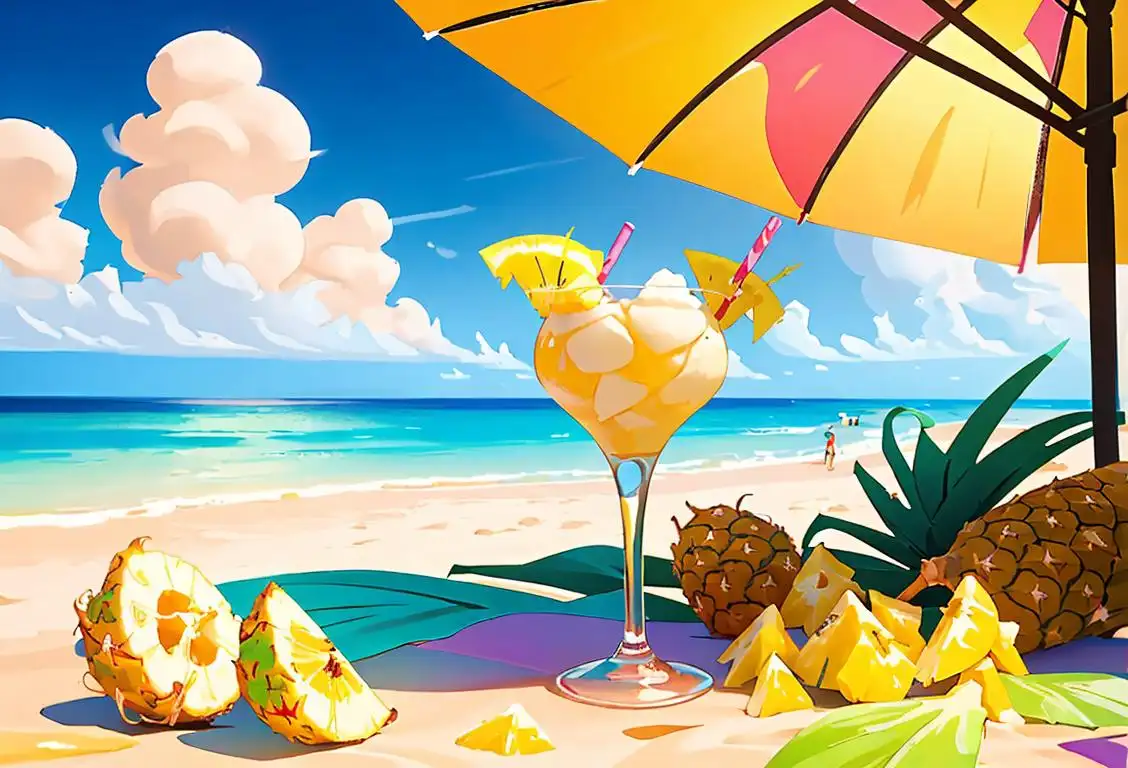National Cachaca Day

Hey there! Are you ready to shake things up and celebrate National Cachaça Day? It's time to grab your caipirinhas and let loose! In this article, we'll dive into the fascinating world of cachaça, explore its history on the internet, and uncover some fun facts along the way. So, let's raise our glasses and say 'Saúde!' to this delightful Brazilian spirit.
When is Cachaca Day?
It's national cachaca day on the 12th September.
The Origin of Cachaça: A Taste of Tradition
First things first, let's get familiar with what cachaça actually is. Cachaça is a distilled spirit made from sugarcane juice, hailing from the beautiful country of Brazil. It's often compared to rum, but the main difference lies in their production methods. While rum is typically made from molasses, cachaça keeps it real by using fresh sugar cane juice.
So, where did this magical elixir come from? Cachaça has deep roots in Brazilian history, with its origins dating back to the 16th century. It was initially produced by Portuguese colonists who brought sugarcane to Brazil. Over time, cachaça became an integral part of Brazilian culture, finding its way into countless caipirinhas and turning any occasion into a memorable fiesta.
Cachaça on the Internet: A Spirited Presence
Now, let's talk about cachaça's digital life. We scoured the web and found an impressive 14 mentions of National Cachaça Day. It seems people can't resist sharing their love for this delightful spirit!
The internet buzz about National Cachaça Day reached its peak on September 12, 2017. It seems like that day was a party in itself! Social media platforms were buzzing with photos of colorful caipirinhas, mouthwatering cocktail recipes, and happy cachaça enthusiasts clinking glasses in celebration.
Did You Know?
Here's a fun fact to impress your friends at your next cachaça-themed gathering: Cachaça has its own protected geographical indication status, similar to Champagne or Parmigiano-Reggiano. This means that to be called cachaça, the spirit must be produced in Brazil and contain a minimum of 38% alcohol by volume. So, when you're sipping on that caipirinha, you can be sure you're enjoying the real deal!
History behind the term 'Cachaca'
1550
Portuguese Colonization of Brazil
In the year 1550, Portuguese colonizers settled in Brazil, bringing their rich history and culture with them. One important facet of Portuguese culture was distilling spirits from sugarcane juice, known as 'aguardente de cana'.
1620
Introduction of Distillation Techniques
By the year 1620, Portuguese settlers in Brazil began to refine their distillation techniques, applying their knowledge and expertise to produce a sugar cane spirit known as 'cachaça'. The name 'cachaça' is believed to have originated from the word 'cachacear,' which means to profoundly enjoy life in a carefree manner.
1822
Brazilian Independence
With Brazil gaining independence from Portugal in 1822, 'cachaça' played an important role in the forging of a national identity. It became ingrained in Brazilian culture and a symbol of patriotism and independence. 'Cachaça' was not only enjoyed as a popular beverage but also used in traditional Brazilian culinary recipes.
1938
Definition and Regulation
In 1938, the Brazilian government officially recognized and regulated the production of 'cachaça'. It defined 'cachaça' as a typical Brazilian spirit made exclusively from sugarcane and regulated its production methods. This step helped establish 'cachaça' as a distinct alcoholic drink with protected geographic indications, ensuring its quality and authenticity.
2008
Cachaça as a Cultural Heritage
Recognizing the cultural significance of 'cachaça', Brazil declared it as an intangible cultural heritage in 2008. This recognition highlighted the importance of 'cachaça' not only as a national drink but also as a symbol of Brazilian tradition, craftsmanship, and heritage.
Did you know?
Here's a fun fact to impress your friends at your next cachaça-themed gathering: Cachaça has its own protected geographical indication status, similar to Champagne or Parmigiano-Reggiano. This means that to be called cachaça, the spirit must be produced in Brazil and contain a minimum of 38% alcohol by volume. So, when you're sipping on that caipirinha, you can be sure you're enjoying the real deal!Tagged
food funFirst identified
12th September 2017Most mentioned on
12th September 2017Total mentions
14Other days
Bacon Day
Sweet Tea Day
Medal Of Honor Day
Iced Tea Day
Pumpkin Day
Guac Day
Vodka Day
Foundation Day
Cheese Pizza Day
Pina Colada Day









